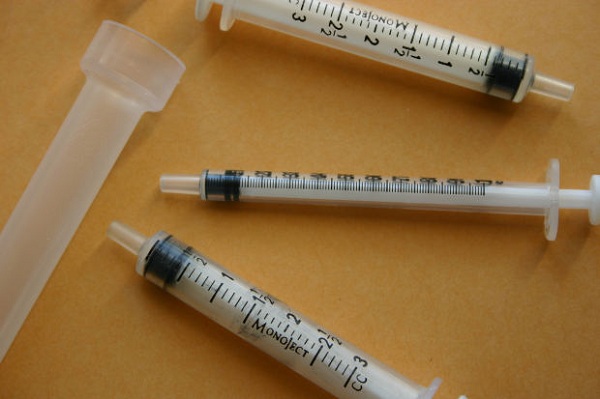The transumbilical breast augmentation procedure, which is also known as, TUBA, is safe and effective. It is a type of breast augmentation wherein breast implants are inserted and transported from the navel. This breast prosthesis insertion technique does not scar the breast since incision will be on the umbilicus.
Only a few doctors do this procedure. Aside from its complexities, only a few doctors are educated about this particular breast augmentation process. The TUBA method is less invasive compared to others. It is applicable or recommended to women who are not willing to take a risk on painful and traumatic breast enhancement surgeries.
History
Dr. Gerald W. Johnson developed TUBA or Transumbilical Breast Augmentation. He conducted the first successful TUBA operation in October 1991.
With this procedure, saline breast implants go through small incisions in a belly button. However, it was safe and effective, but only a few surgeons are knowledgeable and capable of doing the process.
How It Works
 Firstly, an incision goes in the belly button. The surgeon would need an endoscope to make a tunnel through the fat just beneath the skin. A tunnel goes below the skin and ends behind the breast. The surgeon creates a pocket so they can roll the implant up and insert it through the breast.
Firstly, an incision goes in the belly button. The surgeon would need an endoscope to make a tunnel through the fat just beneath the skin. A tunnel goes below the skin and ends behind the breast. The surgeon creates a pocket so they can roll the implant up and insert it through the breast.
After the implant is placed in the location, a sterile saline solution will be added. This is accomplished with the use of a fill tube. When the desire amount is achieved in the breasts, the fill tube will be removed, which closes and seals the valve.
Surgeons are usually examining everything with an endoscope before making a move. They will give another check once the implants were inserted. Once the surgeon has ensured that everything is done accordingly, they remove the endoscope and close the incision.
Advantages Of Transumbilical Breast Augmentation
 The process of transumbilical breast augmentation may be complicated. However, this method of breast enhancement has major advantages making it better than other procedures.
The process of transumbilical breast augmentation may be complicated. However, this method of breast enhancement has major advantages making it better than other procedures.
Here are the following advantages that a patient can get from breast augmentation through belly button.
- Patients will experience lesser pain with the smaller incisions.
- The surgeon lessens the scars as incisions go in the belly button part.
- Lower infection risks because of smaller and fewer wounds.
- It provides lower risks from the side effects of anesthesia and analgesics.
- Absence of concern about retained sponges as none is involved in transumbilical breast augmentation.
- No irregularities to the abdominal passageway.
 Disadvantages
Disadvantages
In the contrary, some disadvantages might occur with TUBA. Here are some risks that could possibly inhibit.
- The process requires an adequately trained specialist.
The TUBA procedure is quite difficult to perform and lack of knowledge or experience of a surgeon may result to a failed operation.
A surgeon must have completed his formal training before attempting to facilitate the TUBA procedure.
- Due to the above reason, it would be hard to find someone who can do the TUBA procedure.
- Though no one had reported any fatalities because of the TUBA process, complications may arise due to a variety of reasons. It could be a result of the patient’s carelessness after the procedure or a surgeon’s mistake during the operation.
- Difficulties and other inconveniences caused by the operation may only be resolved with another incision.
Complications
 Complication rate is very low when it comes to the TUBA procedure. Surgeons have reported no fatalities.
Complication rate is very low when it comes to the TUBA procedure. Surgeons have reported no fatalities.
This makes it one of the safest and most effective breast augmentation processes. Doctors have reported the following complications so far:
5 Unexpected Effects from Transumbilical Breast Augmentation:
 Incision Keloids: Incision keloids are scar tissues that grow at the site of skin incision. This continues to grow overtime. Fortunately, doctors can treat these keloids with a variety of treatments, such as corticosteroid injections, dressings and surgeries.
Incision Keloids: Incision keloids are scar tissues that grow at the site of skin incision. This continues to grow overtime. Fortunately, doctors can treat these keloids with a variety of treatments, such as corticosteroid injections, dressings and surgeries.
- Nipple Numbness: Few patients may notice numbness on their nipples. This condition may last for up to two years.
- Chronic Pain: Some patients experience chronic pain on the site of TUBA.
- Minor Complications: Other complications that may be associated with TUBA are side effects of local anesthesia, infection and early capsular contracture.
 Reoperations: The transumbilical breast augmentation may cause another follow up operation if the surgeon did not do it properly.
Reoperations: The transumbilical breast augmentation may cause another follow up operation if the surgeon did not do it properly.
Mistakes in the operation may cause problems with the shape, size, deflation and contracture.
This usually happens if the surgeon who performed the TUBA did not receive proper training or knowledge about the process.
Limitations
Transumbilical breast augmentation has the following limitations:
- Inflatable implants are necessary with the TUBA procedure.
- Transumbilical breast augmentation is only appropriate for sub-muscular or sub-pectoral placement.
 Only a few surgeons are willing to practice and perform this type of breast augmentation. This is due to the huge amount of chances of committing errors.
Only a few surgeons are willing to practice and perform this type of breast augmentation. This is due to the huge amount of chances of committing errors.
Recovery
Since the TUBA process is less invasive than other enhancement methods, patients can expect a shorter recovery.
 It also saves the patient from trauma, stress and further risks that a typical breast augmentation process will cause. Pain and discomfort may be inhibited but these are only minor problems in a surgery.
It also saves the patient from trauma, stress and further risks that a typical breast augmentation process will cause. Pain and discomfort may be inhibited but these are only minor problems in a surgery.
TUBA or Transumbilical Breast Augmentation is a safe option for breast augmentation. Unlike other enhancement methods, TUBA saves a patient from a very painful and traumatic surgery. Besides all this, it also has its own limitations and disadvantages.
If you chose to undergo this kind of procedure, you should take the time to find a skilled or qualified surgeon. Your primary doctor can recommend the best one in your area for you to visit. They will want to work with the surgeon to monitor your recovery, as well.

 Disadvantages
Disadvantages Incision Keloids:
Incision Keloids:  Reoperations: The transumbilical breast augmentation may cause another follow up operation if the surgeon did not do it properly.
Reoperations: The transumbilical breast augmentation may cause another follow up operation if the surgeon did not do it properly. Only a few surgeons are willing to practice and perform this type of
Only a few surgeons are willing to practice and perform this type of